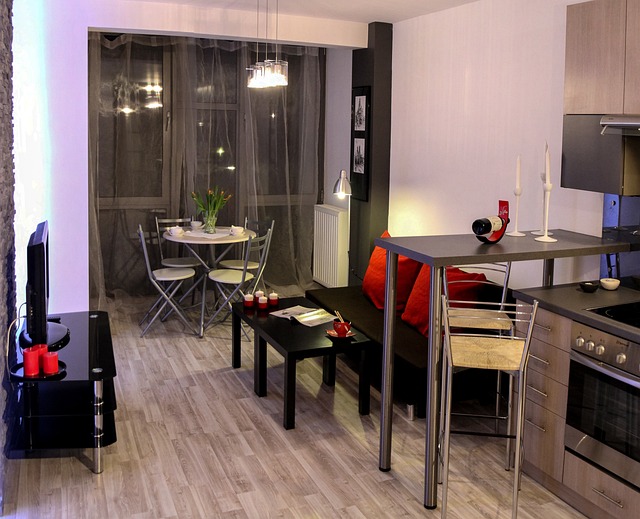GLULAM (Glued Laminated Timber) offers a modern construction solution with exceptional strength, aesthetic appeal, and environmental benefits. Its high strength-to-weight ratio, precision manufacturing, and versatility reduce material costs and waste while enabling faster construction timelines. Compared to traditional methods, GLULAM's structural advantages and longevity make it a cost-effective, sustainable choice for various sectors, gaining popularity as an innovative framing solution.
“Discover the revolutionary power of GLULAM (Glulam Beams) and its cost-effectiveness in construction. This innovative material, a laminated wood product, offers unparalleled strength and versatility. Our article breaks down the key factors driving GLULAM’s success, from its basic properties to detailed cost analyses. We conduct a comparative study with traditional framing techniques, highlighting long-term savings through enhanced sustainability and extended lifespan. Dive into this comprehensive guide to understand why GLULAM is becoming a game-changer in the construction industry.”
- Understanding GLULAM: Definition and Basic Properties
- Cost Factors in GLULAM Construction: A Breakdown
- Comparative Analysis: GLULAM vs Traditional Framing Techniques
- Long-Term Savings: Sustainability and Lifespan Considerations
Understanding GLULAM: Definition and Basic Properties
GLULAM, an acronym for Glulam (Glued Laminated Timber), is a modern engineering solution derived from natural resources. It involves laminating multiple layers of timber to create large structural elements with exceptional strength and stability. This innovative construction material has gained popularity in recent years due to its unique properties and advantages. GLULAM offers a sustainable alternative to conventional building materials, making it an attractive option for environmentally conscious architects and builders.
In the realm of glulam architecture design trends, this versatile material is being increasingly utilized for its strength-to-weight ratio and aesthetic appeal. The construction speed and efficiency of GLULAM are remarkable, allowing for faster project timelines and reduced labor costs. Its potential to contribute to sustainable infrastructure is also significant, as it promotes eco-friendly practices while ensuring structural integrity and longevity in various building applications.
Cost Factors in GLULAM Construction: A Breakdown
When evaluating the cost-effectiveness of GLULAM (Glued Laminated Timber) in construction, several key factors come into play. The initial investment for glulam in modern wood architecture can be higher compared to conventional building materials. However, this is offset by its exceptional strength and durability, reducing long-term maintenance costs significantly. Engineering marvels of glulam offer structural efficiency, enabling thinner sections while maintaining integrity, which translates to less material usage and cost savings.
GLULAM manufacturing quality control is a critical aspect that ensures the final product’s precision and safety. This process involves rigorous testing and meticulous bonding techniques, contributing to the overall structural reliability. Despite initial costs, glulam’s longevity, versatility, and environmental friendliness make it a compelling choice for projects demanding strength and aesthetics. The consistent demand for engineering marvels of glulam in diverse construction sectors further underscores its cost-effectiveness over time.
Comparative Analysis: GLULAM vs Traditional Framing Techniques
When comparing GLULAM (Glued Laminated Timber) to traditional framing techniques, the cost-effectiveness of the former becomes increasingly evident. GLULAM offers a unique set of advantages that can significantly reduce construction costs while maintaining exceptional structural integrity. Its ability to handle complex geometry and create intricate architectural elements makes it an attractive solution for modern designs. Engineering marvels of GLULAM are not only aesthetically pleasing but also provide cost-efficient alternatives to conventional framing methods.
In contrast, traditional framing often involves more materials, labor, and time due to the need for repetitive cutting and fitting processes. Moreover, the complexity of some structural configurations can lead to higher material wastage and increased costs. GLULAM, on the other hand, is designed to minimize waste by utilizing larger timber sections and precise engineering, resulting in a more sustainable and budget-friendly approach to construction. This comparative analysis highlights why GLULAM is becoming an increasingly popular choice for those seeking innovative yet cost-effective building solutions.
Long-Term Savings: Sustainability and Lifespan Considerations
The cost-effectiveness of glulam, a sophisticated structural engineering solution, extends far beyond its initial installation price point. One of the most significant long-term savings comes from its exceptional lifespan and sustainability profile. Unlike traditional wood products that may require frequent replacement due to rot or damage, glulam is engineered to withstand harsh environmental conditions for centuries with minimal maintenance. This longevity directly translates into reduced construction and renovation costs over time.
Moreover, glulam’s structural versatility makes it a prime choice for complex architectural designs, including those found in cultural centers. Its ability to span vast distances without intermediate supports reduces the overall material needs and labor costs associated with traditional framing methods. As the demand for sustainable building materials continues to rise, glulam offers an eco-friendly alternative that not only minimizes environmental impact but also provides a robust financial argument through its longevity and performance in challenging conditions.
Glulam, a modern construction method combining strength, aesthetics, and cost-effectiveness, offers a compelling alternative to traditional framing techniques. By understanding its unique properties, breaking down cost factors, and considering long-term savings in sustainability and lifespan, it’s clear that glulam presents a promising solution for both builders and consumers alike. Its efficiency and durability make it a smart choice for projects seeking both quality and value.







